A Brief Information on Solar Energy Advantages and Disadvantages
In our day-to-day life we frequently use many electrical and electronic appliances such as mobile phones, fans, coolers, electric lights, air conditioners, computers, industrial instruments, machines, and so on. All these electrical and electronic components or devices require an electric power supply for their operations.
To provide sufficient power and reach the load demand, there are different ways for generating the electric power using different energy sources such as Solar Energy, Thermal Energy, Wind Energy, Nuclear Energy, and so on. In this article, we will discuss about solar energy and the advantages and disadvantages of solar energy system used for electric power generation.
Solar Energy
The Sun’s radiant light and heat harnessed to provide solar energy. The evolving technologies such as solar thermal electricity, solar architecture, solar heating and solar photovoltaics are used for this solar energy. Based on the way to capture, convert and distribute solar energy, these solar technologies are classified into two types as active solar and passive solar. The electrical energy generated from the solar energy is called as Solar Power Energy.
The solar energy used directly for heating water in swimming pools, day lightning, drying up clothes, and so on, without any intermediate devices or converters is called as Passive Solar Energy.
The solar energy which is indirectly used for providing power supply to power consuming devices after processing through the intermediate devices such as solar panels or photovoltaic cells for converting solar energy into electrical energy is called as Active Solar Energy.
Solar Power Energy Conversion Process
The solar energy is converted into electrical energy called as Solar Power Energy, and this conversion process takes place by using using solar panels, charge controller, battery and inverter.
Solar Panels
The solar panels or photovoltaic cells are used for the conversion of (solar energy) light into electric current (DC) using the photovoltaic effect. This system can be called asSolar Power System. Solar panels are inflexible modules made of silicon or wafer-based-crystalline silicon.
Photovoltaic cells are classified into two types: poly crystalline and mono crystalline cells. Several photovoltaic cells are interconnected to form a module and an array of these modules is called as a solar panel.
Battery System
The battery system consists of secondary cell or rechargeable electric battery. There are two types of batteries such as lead acid and gel-cell-deep cycle batteries.
The battery is used to store power during the daytime, while solar panels generate power and can be used in night times using an inverter.
Charge Controller
The charge controller is used to switch on or off the charging and load. It is mainly used for protecting the battery from over charge and under charge conditions.
During the daytime controller switches the battery to store power generated from the solar panels and, during night times, it supplies power to the load through an inverter.
Inverter
The inverter is used to convert the DC power into AC power , and then to provide AC supply to the loads.
As many loads, which we use frequently, require AC power- it is necessary to convert the DC into AC. The power stored in the battery is in DC form, this can also be converted into AC using an inverter in the system.
Importance of Solar Energy
There are different types of energy sources with which we can generate electrical energy, but in this process of electric power generation many things like pollution, cost, efficiency, renewable or nonrenewable energy used for power generation, etc. are to be taken into consideration. Here we need to consider the importance of solar energy to produce electricity and such that to conserve the nonrenewable energy sources such as coal, petroleum, other fossil fuels and also.
Solar energy is not only used for the generation of electricity, but also used by the plants for theproduction of the green chlorophyll and food in plants by means of photosynthesis – the must haves for the survival of plants.From the advantages of solar energy and solar energy projects discussed below in this article we can understand the importance of solar energy.
Solar Energy Advantages and Disadvantages
Even though there are numerous advantages of solar energy, but there are some disadvantages of solar energy as well which are listed below:
Advantages
The solar energy is free and renewable resource to generate electricity, but requires collectors and some other equipment for conversion of solar energy into electrical energy.
- Solar cells used for power generation causes no noise. whereas generators or turbines of other methods causes noise pollution.
- It does not cause much pollution compared to other power generating methods such as a thermal power plant, nuclear power plant, and so on.
- The solar cells do not consist of any moving parts and hence requires a little maintenance for their operation.
- It can be used in remote areas for generating and utilizing power in that locality, where the transmission of electricity is too expensive.
- The solar power offers energy security by avoiding the general power system in which there is a possibility of power theft.
- In general, calculators and some low-power-consuming electronic devices can be energized using solar energy effectively.
- The solar energy can produce 50% of the power required to house by installing the solar panels.
- In long term usage of solar energy, the solar power setup investment can be regained at maximum levels as solar energy is free of cost.
- It is an everlasting infinite renewable energy source compared to other limited energy sources such as nuclear energy, coal, etc., which are estimated to last for 30 or 40 years.
- It can be considered as a job creating power house; if once the installation or construction of solar power stations is initiated, then it will offer more job opportunities for many engineering students.
The figure above shows the solar power generated from the solar panels of a house roof can be used for household purposes like washing machine, etc., and the remaining power can be sold to the grid to get paid for exporting electricity.
Disadvantages
The installation cost of the solar panels to use solar energy is very expensive, and theinitial investments can be covered only after long-term (many years) utilization.
- The solar power energy generation entirely depends on the sunlight incident on the solar panelsand which in turn depend on the climatic conditions.
- The solar energy can be harnessed in a limited period as the sunlight is available only during the day time and sunny days; thus, power can be generated only in limited time periodand the power has to be saved in batteries for later usage.
- The batteries used to store solar power are very costly, huge sized and need to be replaced from time to time.
- The efficiency of solar power system (conversion of solar energy into electrical energy) is around 22% and for improving this, large areas are required to capture more Sun light and produce adequate electricity.
Solar Energy Projects
There are many solar energy based electrical and electronic projects like a simple solar water heater and a few projects are listed below along with their aims. The massive awareness among individuals and institutions regarding the solar energy’s advantages and disadvantages has initiated them to start designing and developing new advanced solar energy projects. The new advanced, innovative projects include Sun Tracking Solar Panel, Raspberry Pi based Solar Street Light, Solar Power Charge Controller, Solar Energy Measurement System and many other solar based microcontroller projects.
Raspberry Pi based Solar Street Light
The main goal of this project is to design LED based street lights with auto- intensity control using solar power or solar energy by photovoltaic cells with the Raspberry Pi board. The solar panels are used for the conversion of the solar energy into electrical energy and this electrical energy is used to charge the batteries using a charge control circuit.
The light intensity is controlled to save energy during the low traffic density times (generally late nights). The PWM technique is embedded with the Raspberry Pi board as shown in the block diagram to save solar energy by providing different intensities at different times.
Solar Power Charge Controller
The main intention of the Solar Charge Controller project is to store electrical energy in batteries, obtained by converting the solar energy into solar power energy or electrical energy using photovoltaic cells, during the day time and to utilize this stored energy during night time. A set of op-amps are used as comparators for monitoring panel voltage and load current as shown in the block diagram.
Different types of LEDs are used for indicating under charge, overload and deep discharge conditions. The MOSFET is used as a power semiconductor switch to cut off the load in low battery or overload conditions. If the battery is fully charged, then the solar energy is bypassed to the dummy load using a transistor.
There are many scientists, institutions, individuals doing research to improve the efficiency of solar power energy system. You can share some more solar energy advantages and disadvantages that you know in the comment section in order to encourage the usage of renewable solar energy. For further technical help regarding the solar power and solar energy based projects, please post your queries, comments and solar energy project ideas to implement using microcontroller.
Photo Credits:
- Solar Panel by processindustryforum
- Solar Energy by peabuilders
- Active Solar Heating by scienceprojectideasforkids
- Solar Power Energy Conversion Process by alternative-energy-news
- photovoltaic cells by nasa
- Battery System by gstatic
- Charge Controller by cpssolar
- Inverter by powerinverterscn
- Solar Energy Advantages by solar-on
https://www.elprocus.com/solar-power-energy-with-advantages-and-disadvantages/

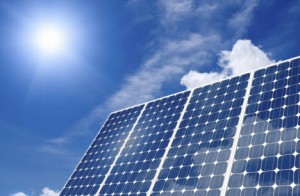

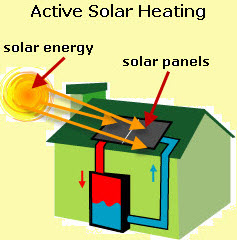
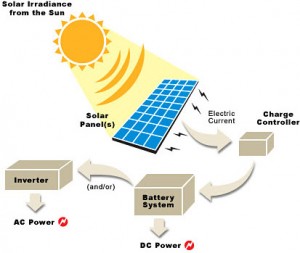


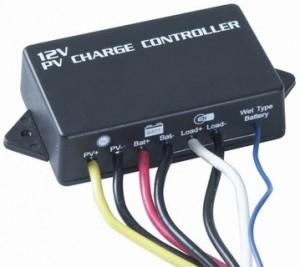
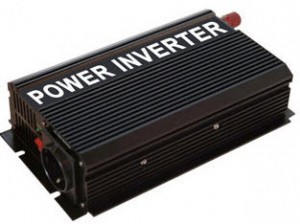
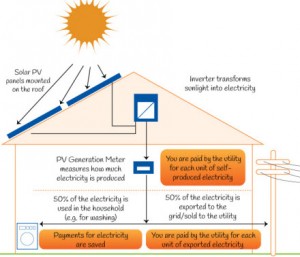
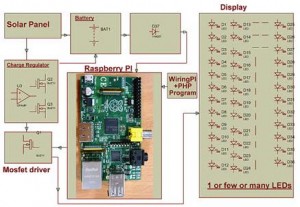
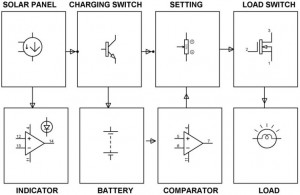
هناك 3 تعليقات:
Hello sir, it's a very interesting blog related to innovation renewable energy projects. Thank you for sharing it will be helpful for engineering students to develop their own academic projects. for some more interesting projects Renewable Energy Projects For Engineering Students
Juniper Green Energy spearheads transformative solar energy projects pioneering sustainable solutions for a greener tomorrow. With a commitment to innovation, their solar projects harness the power of sunlight, driving clean energy initiatives.
This blog gives a clear picture of solar energy's importance. A perfect example of real-world impact is Avaada Group , which continues to expand India’s solar capacity with innovative and sustainable solutions. Their work is truly making a difference.
إرسال تعليق